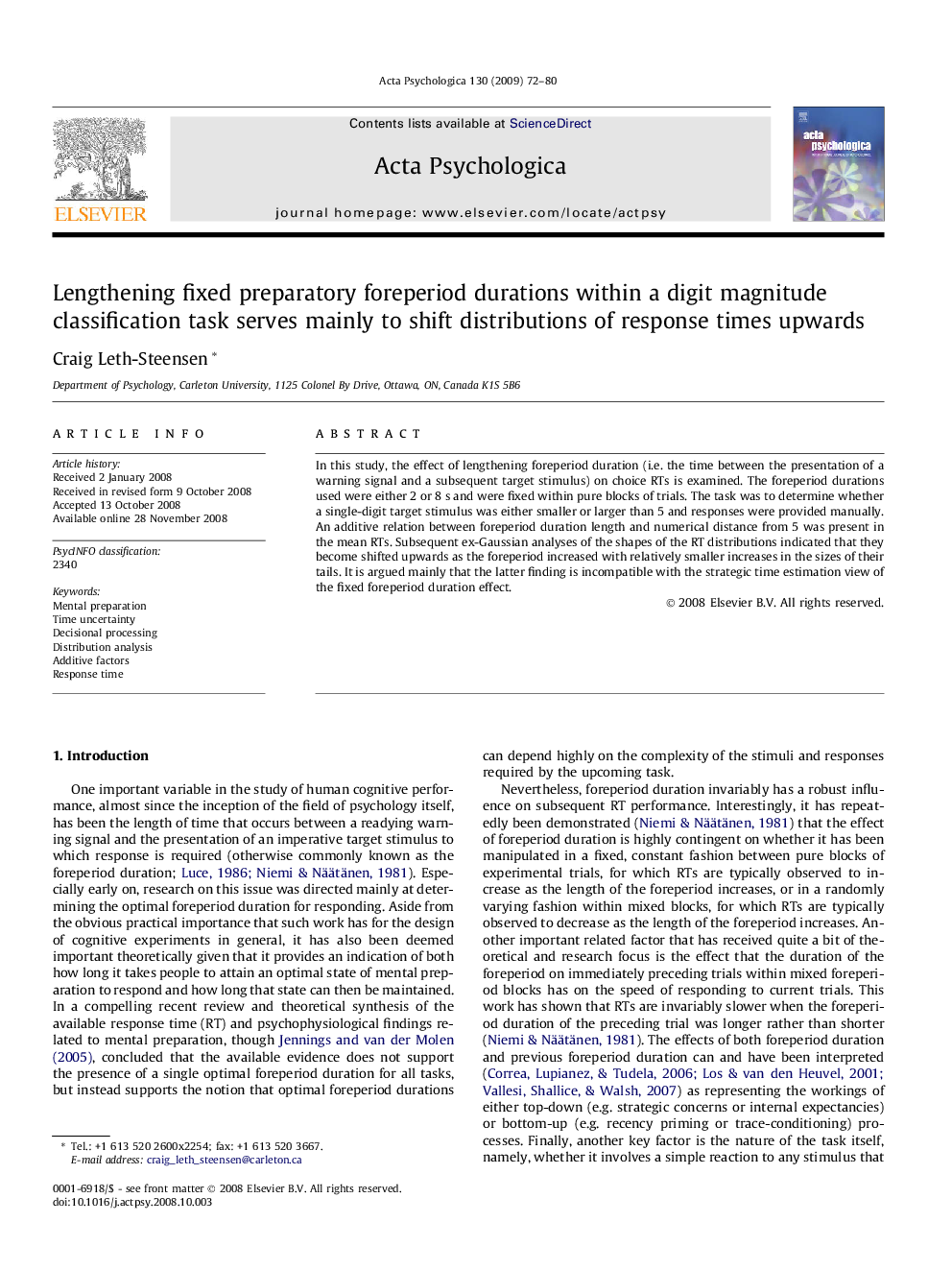| Article ID | Journal | Published Year | Pages | File Type |
|---|---|---|---|---|
| 920531 | Acta Psychologica | 2009 | 9 Pages |
In this study, the effect of lengthening foreperiod duration (i.e. the time between the presentation of a warning signal and a subsequent target stimulus) on choice RTs is examined. The foreperiod durations used were either 2 or 8 s and were fixed within pure blocks of trials. The task was to determine whether a single-digit target stimulus was either smaller or larger than 5 and responses were provided manually. An additive relation between foreperiod duration length and numerical distance from 5 was present in the mean RTs. Subsequent ex-Gaussian analyses of the shapes of the RT distributions indicated that they become shifted upwards as the foreperiod increased with relatively smaller increases in the sizes of their tails. It is argued mainly that the latter finding is incompatible with the strategic time estimation view of the fixed foreperiod duration effect.
